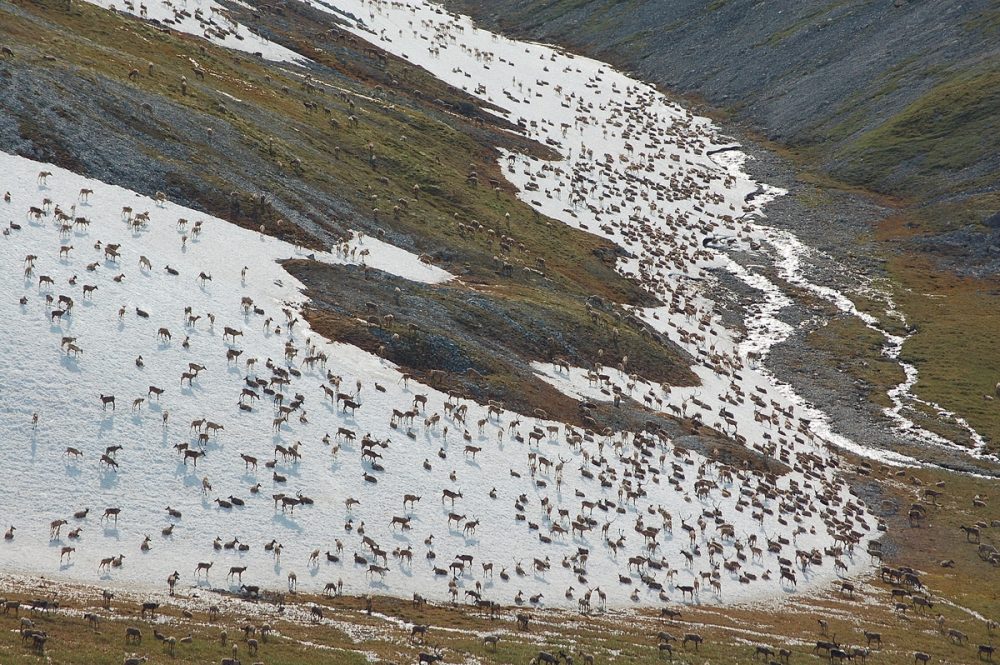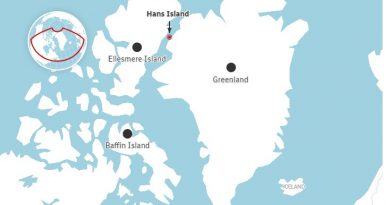Northwest Alaska caribou herd may finally be growing after steep decline

The steep population slide of what was once Alaska’s largest caribou herd may finally be bottoming out.
Lincoln Parrett, a Fairbanks-based caribou biologist for the Alaska Department of Fish and Game, said Monday a summer survey put the population of the Western Arctic Caribou Herd at 201,000 animals.
That’s just 41 percent of the herd’s size when it peaked 13 years ago. More recent censuses estimated the population at 325,000 in 2011 and 235,000 two years later. Technical problems prevented an aerial survey in 2015.
But beyond the population, other signs suggest the herd may be rebounding, according to Fish and Game:
* Improved calf survival.
* Heavier females and calves, with the latter averaging about 100 pounds, the most in the eight years they’ve been documented by biologists and about 11 pounds heavier than the 2008-11 average.
* Strong overwinter calf survival, with about 82 percent making it through, one of the highest rates ever recorded.
“High calf survival rates are being mirrored in the adult female survival rate, which is on track to be among the highest recorded in this herd,” Parrett wrote in a press release.
Better days ahead
The news comes five months after the Federal Subsistence Board decided to close caribou hunting to everyone except federally qualified subsistence users, an action that went into effect last month and is due to continue until June 2017. Typically, about 13,000 caribou are taken by sport and subsistence hunters.
However, Fish and Game has asked for the subsistence board to reverse that decision, convinced that better days are ahead for the herd.
Conservation efforts adopted last year stopped the harvest of calves, halted the nonresident harvest of cows and put more limits on nonresident harvest of bulls.
Rebound mystery
No one is sure exactly what explains the decline, other than the fact that caribou herds sometimes see sharp drops and pronounced gains.
Climate change may play a role. A number of animals were lost one recent winter when rain iced up the landscape, creating a hard-to-penetrate barrier to vegetation that caribou eat.
“It was obvious to the people working in the area that that rain-on-snow event had a big effect on the caribou,” Parrett said.
So far, there isn’t evidence that pressure from predators is a major factor, he added.
The Western Arctic Caribou Herd Working Group will meet in December to discuss ways to return the herd to health.
Western Arctic caribou roam a massive area of 157,000 square miles — nearly the size of California — over land with an array of owners and managers, and help feed some 40 subsistence-based communities.
Contact Mike Campbell at mcampbell@alaskadispatch.com
Related stories from around the North:
Canada: Canadian caribou herd rebounds but future uncertain, Radio Canada International
Finland: Reindeer glitter to improve road safety in Finland, Yle News
Norway: 323 Norwegian reindeer killed by lightning strike ‘in the wrong place at the wrong time’: expert, Eye on the Arctic
Sweden: Bear hunt quota worries reindeer herders in Sweden’s Arctic, Radio Sweden
United States: Western Arctic Caribou Herd still Alaska’s biggest?, Alaska Dispatch News



